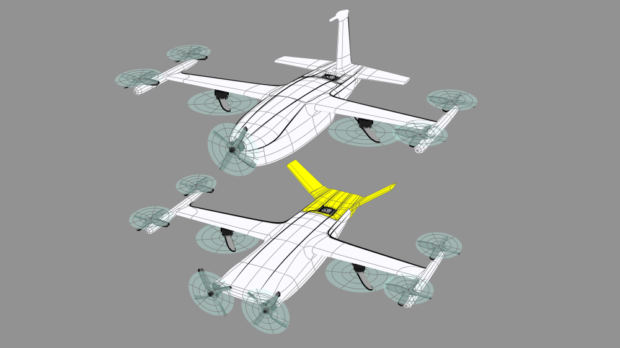Wing has unveiled a series of new prototype aircraft designed to handle a variety of payloads. The company said the new drones will share the same underlying components with the aircraft currently in use delivering pharmaceuticals and other small packages in the suburbs outside of Dallas-Fort Worth.
Aircraft operate most efficiently around one design point. Big planes carry big stuff, and small planes carry small stuff. For planes like ours, typically that stuff should be about 25 percent of the mass of the plane. Moving away from that ratio means excess aircraft for the goods being carried, translating to more cost, more energy, and more materials expended. This can create a spiral: extra hardware necessitates a bigger plane with more battery and bigger motors, which, in turn, requires an even bigger plane with even more battery and even bigger motors. Cars, which perform most of today’s on-demand deliveries, are the ultimate example of this mismatch, where the stuff being carried represents less than 0.1 percent of the mass of the vehicle.
In our operations today we’ve demonstrated the significant potential for drone delivery, and have shown that with our current aircraft we can move a large portion of existing on-demand goods. The delivery ecosystem is immense, and our R&D folks are always exploring different ways to serve this space. Transportation has and will continue to be multimodal, and Wing’s design approach aims to address this. We’ve developed a core set of hardware and software components that can be used to create a variety of different vehicles tailored for specific use cases: an aircraft library. While we’ve been accumulating hundreds of thousands of delivery cycles on these core components in our Hummingbird series aircraft, we’ve also been filling the shelves of this library with additional configurations.
These vehicle designs draw from sets of common avionics, propulsion system elements, and materials. This allows us to rapidly evolve aircraft configurations from a proven foundation and tailor them to a broad range of uses from delivery of food, medicine and other goods, to supply chain optimization and emergency response.
Explorations for Wing’s Aircraft Library
We can have tiny planes for pharmaceutical delivery, big planes for shipping fulfillment, long range aircraft for logistic flights, and dedicated hovering platforms for delivery in cities.
Aligned by a core set of capabilities–efficient flight, precision delivery, optimized airframes, and autonomous navigation–each of these designs is suited to a different use. If and when a new partner or operational need arises, we can go into the library, take an article off the shelf, take it through the rest of the development and testing process, and start delivering what people need. These aircraft represent a more efficient approach to multimodal delivery that is safer and more sustainable too.
Source: Wing Blog Post






